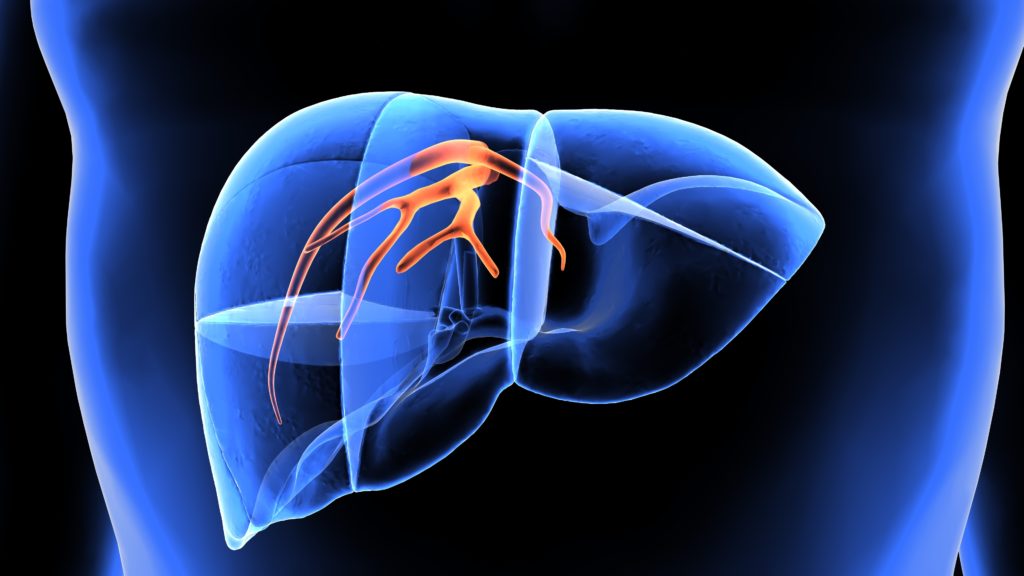
Fatty liver disease is not limited to the overweight and obese. Lean people also get fatty liver disease. Though as researchers from The Westmead Institute for Medical Research (WIMR) discovered, how fatty liver disease develops in lean people is very different than in others. The discovery will aid in the development of potential treatments for these patients.
Fatty liver disease – a condition characterized by a build-up of fat in the liver – affects a quarter of the world’s population. Although it commonly develops in overweight and obese people, many individuals with a body-mass index of less than 25kg/m2 will develop the disease, and tend to have worse outcomes compared to obese patients.
Professor Jacob George, co-lead researcher of the study said, “Cases of lean fatty liver disease are considered a bit of a mystery, as we don’t know how and why the disease develops and progresses. “Our research team compared the metabolism, gut bacteria and genetic profiles of patients with lean and non-lean fatty liver disease to determine factors that contribute to disease development and progression.”
“Interestingly, lean fatty liver patients have a very distinct metabolism compared to non-lean ones, which can explain some of the differences we see in disease progression.” ~ Professor Jacob George
“Compared to non-lean patients, lean patients had higher levels of bile acids, which play a role in the digestion of fats, and a protein called fibroblast growth factor 19 (FGF19). Bile acids and FGF19 increase energy expenditure, which can explain why lean individuals with fatty liver disease stay lean. This suggests that lean patients with a fatty liver may have an ‘obesity-resistant’ profile and better adaptation to an excess intake of calories,” said Professor Jacob George.
Other findings includes:
- Patients with lean NAFLD had a more favorable metabolic and histological profile compared to those with non‐lean NAFLD (P < 0.05 for all).
- BA levels were significantly higher in NAFLD with advanced compared to earlier stages of liver fibrosis.
- Patients with lean NAFLD had higher serum secondary BA and FGF19 levels and reduced 7‐alpha‐hydroxy‐4‐cholesten‐3‐one (C4) levels (P < 0.05 for all). These differences were more profound in early compared to advanced stages of fibrosis (P < 0.05 for both).
- Lean patients demonstrated an altered gut microbiota profile. Similar findings were demonstrated in the lean and non‐lean murine models of NAFLD.
- Treating mice with an apical sodium‐dependent bile acid transporter inhibitor (ASBTi) (SC‐435) resulted in marked increases in fgf15, a shift in the BA and microbiota profiles, and improved steatohepatitis in the lean model.
Associate Professor Mohammed Eslam, the co-lead researcher added, “Importantly, the favourable profile of lean patients did not protect them from liver fat accumulation.
“We also identified changes in particular gut bacteria and novel genes that can influence the development of fatty liver disease in lean patients. For example, we identified that a variant in the gene TM6SF2, previously linked to fatty liver disease, is more common in lean patients.”
Without treatment, fatty liver disease can result in liver scarring, liver cirrhosis and, in severe cases, liver failure.
Associate Professor Mohammed Eslam said, “The metabolic adaptive mechanisms in lean fatty liver disease tend to be lost in the late stages of the disease. This could explain why these patients have worse disease outcomes compared to their obese counterparts. Now that we know more about the metabolic profile and processes behind the fatty liver disease in lean people, we can work towards more targeted treatments for these patients.”
Conclusion/ Differences in metabolic adaptation between lean and non‐lean NAFLD patients, at least in part, explain the pathophysiology and provide novel options for therapy. Professor George concluded, “Our research is now focused on understanding more about the condition, so that we can prevent its progression, and develop more personalised treatment regimens.
Source: Chen, F. , et al. Lean NAFLD: A Distinct Entity Shaped by Differential Metabolic Adaptation. Hepatology. (2019) Accepted Author Manuscript. doi:10.1002/hep.30908





